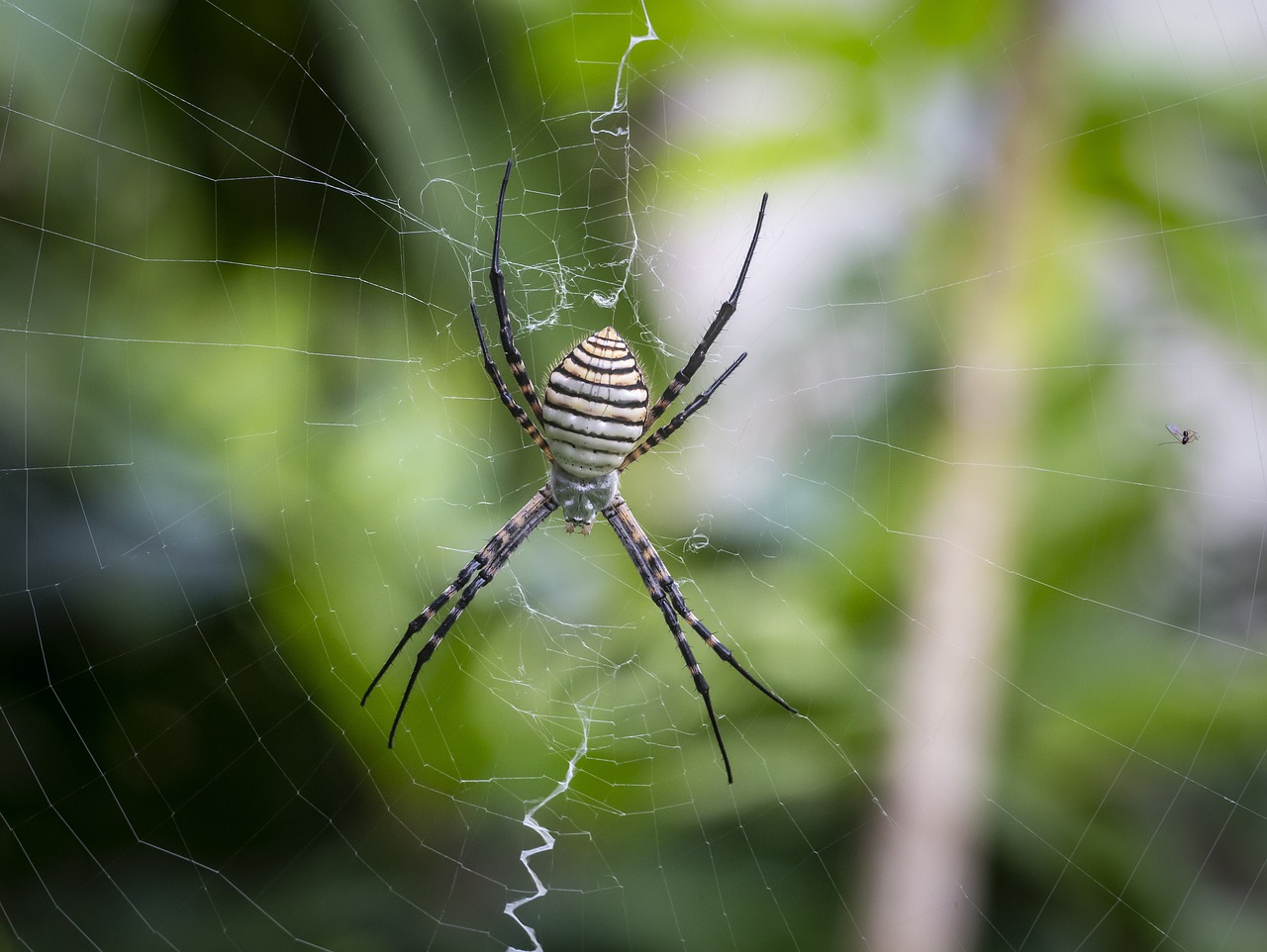The Banded Orb-Weaving Spider (Argiope trifasciata) is a visually distinctive arachnid known for its striking coloration and intricate web designs. Here’s an in-depth look at this fascinating spider:
Appearance
- Size:
- Females: Larger, with a body length of about 13-20 millimeters.
- Males: Smaller, with a body length of about 4-6 millimeters.
- Coloration:
- Abdomen: Silver, white, and yellow bands with black markings.
- Cephalothorax: Silvery or white.
- Legs: Black and yellow banded.
Habitat
- Preferred Habitats: Found in gardens, fields, tall grasses, and open areas.
- Geographic Range: Widely distributed across North and South America, Australia, and parts of Europe.
Behavior
- Web:
- Type: Orb-shaped, often large and vertically oriented.
- Stabilimentum: A zigzag pattern often found in the center of the web, thought to attract prey or provide camouflage.
- Feeding:
- Diet: Insects, including flies, grasshoppers, and bees.
- Hunting: Spiders sit in the center of their web and wait for prey to get trapped. They quickly immobilize their catch with silk and inject venom.
Life Cycle
Eggs:
- Laying: Females lay eggs in a silk sac, which is often hidden within vegetation.
- Hatching: Spiderlings emerge from the egg sac after several weeks.
Spiderlings:
- Dispersal: Young spiders disperse through a process called ballooning, where they release silk threads to catch the wind and travel to new locations.
Adults:
- Molting: Spiders go through several molts as they grow.
- Lifespan: Typically, the lifespan of Argiope trifasciata is about one year, with adults dying after reproduction.
Identification Tips
- Distinct Markings: The banded pattern on the abdomen is a key identification feature.
- Web Structure: The presence of a large orb-shaped web with a stabilimentum can indicate the presence of this species.
Ecological Role
- Pest Control: As predators of various insects, they help control pest populations.
- Food Web: Serve as prey for birds, larger spiders, and other predators.
Conservation Status
- Population: Generally stable with no major threats.
- Threats: Habitat destruction and pesticide use can impact local populations.
Conservation Efforts
- Habitat Preservation: Maintaining natural areas and reducing pesticide use can help support their populations.
- Gardening Practices: Encouraging diverse plant life and avoiding chemical treatments in gardens can provide suitable habitats for these spiders.
Human Interaction
- Garden Helpers: Beneficial in gardens for their role in controlling insect populations.
- Bites: Generally not harmful to humans. Bites are rare and only occur if the spider is threatened.
Summary
The Banded Orb-Weaving Spider (Argiope trifasciata) is a remarkable species known for its distinctive banded appearance and intricate web designs. Widely distributed and beneficial for pest control, these spiders play an important role in their ecosystems. By maintaining natural habitats and adopting spider-friendly gardening practices, we can support the populations of these fascinating arachnids. Recognizable by their striking coloration and characteristic web patterns, Banded Orb-Weaving Spiders are an interesting and important part of the natural world.
Views: 300
Subscribe to the newsletter:
